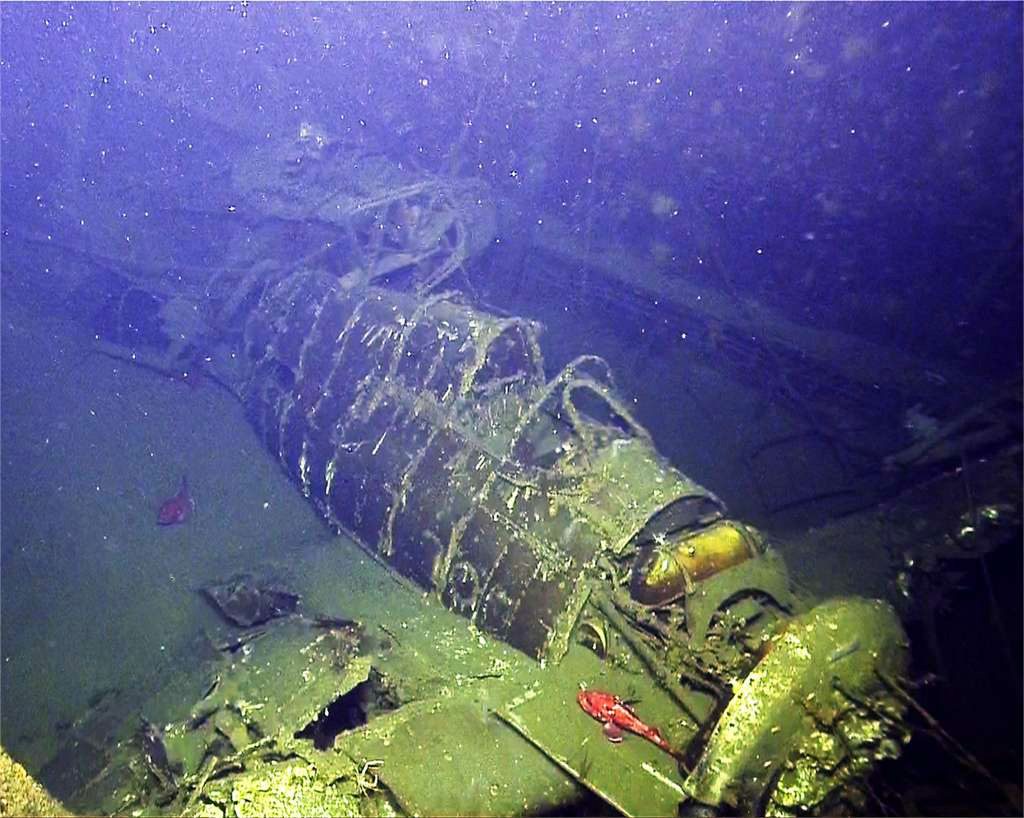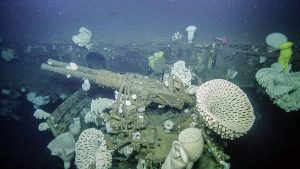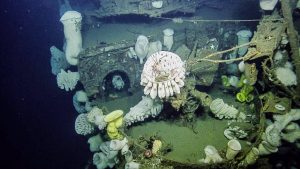On Tuesday, August 23, Scientists aboard the E/V Nautilus research ship successfully explored the sunken hulk of a World War II aircraft carrier which was sunk off the Farallon Islands. Scuttled in 1951 off of San Francisco, no one has seen this aircraft carrier since until now.
The USS Independence, which was used in the historic tests of the American atom bomb at the Bikini Atoll in 1946, now lies within the Greater Farallones Marine Sanctuary maintained by the National Oceanic and Atmospheric Administration.
Crew members of the Nautilus used two remotely operated vehicles, named Argus and Hercules, to explore the wreckage a depth of over 2,000 feet. High definition cameras on each ROV captured images of the rusting carrier during the dives. Even after more than half a century under water, the ship’s name on its stern is clearly visible, and so are the turrets that once carried its 40mm antiaircraft guns.
A single Hellcat fighter plane was seen aboard on the hangar deck, seemingly ready to take off into battle. The Hellcat was one of many, along with the ship’s Helldiver bombers, that defeated the Japanese Navy in 1944 at the Battle of Leyte Gulf.
The Nautilus is operated independently by the nonprofit Ocean Exploration Trust, and its two ROVs are equipped with specialized tools controlled from shipboard that are gathering samples of the corals, sea sponges and other organisms growing on the hull of the Independence. Samples of the sea life will be brought aboard to be tested for any possible radioactivity remaining from the 1946 bomb tests in addition to being analyzed by biologists for the effects of climate change.
.



